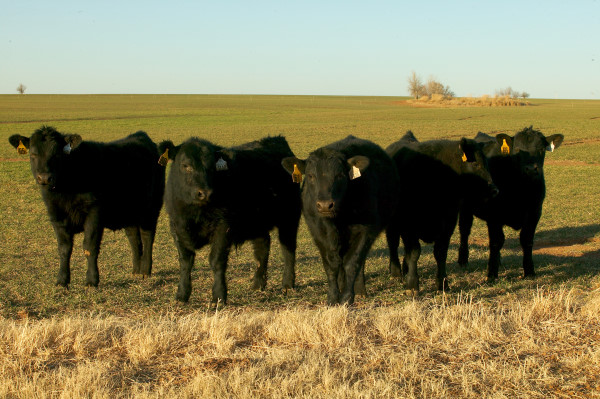Another difference is how they are grown. Straw comes from wheat.
The combine cuts the wheat and saves the seed which is then turned into cereal, bread, flour, and many more delicious foods. The field is only harvested once. Some farmers choose to plant double crop beans in the wheat stubble. Double cropping means to harvest two crops from one field in one season.
The combine leaves all the other parts of the plant in the field. It is then baled in to square bales (they are actually rectangle, but everyone calls them square;)), or round bales.
These bales are used for bedding to keep our cattle nice and comfy and warm when they lie down.
Hay comes from a grass, mainly alfalfa or clover. It is also harvested in the summer months. Just like the grass grows in your yard after you mow it, so does hay. Unlike wheat, we usually get 3-4 cuttings (or mowing) of hay a season. We don't use a combine to mow the hay, but instead use a hay bine. It works the same way as a lawn mower. After the hay is cut, we let it dry for a day or two depending on weather conditions, then it is raked into rows and then baled.
Like wheat, the hay is baled into square bales or round bales. Here is a short video that shows the baling process. The implement behind the tractor is called an accumulator. It stacks the bales nice and neat to be picked up later.
The hay is used to feed our cattle. To find out what we feed our cattle, check out this post.
So, there you have it! Hopefully that clears up the question, "What's the difference between hay and straw?"







































